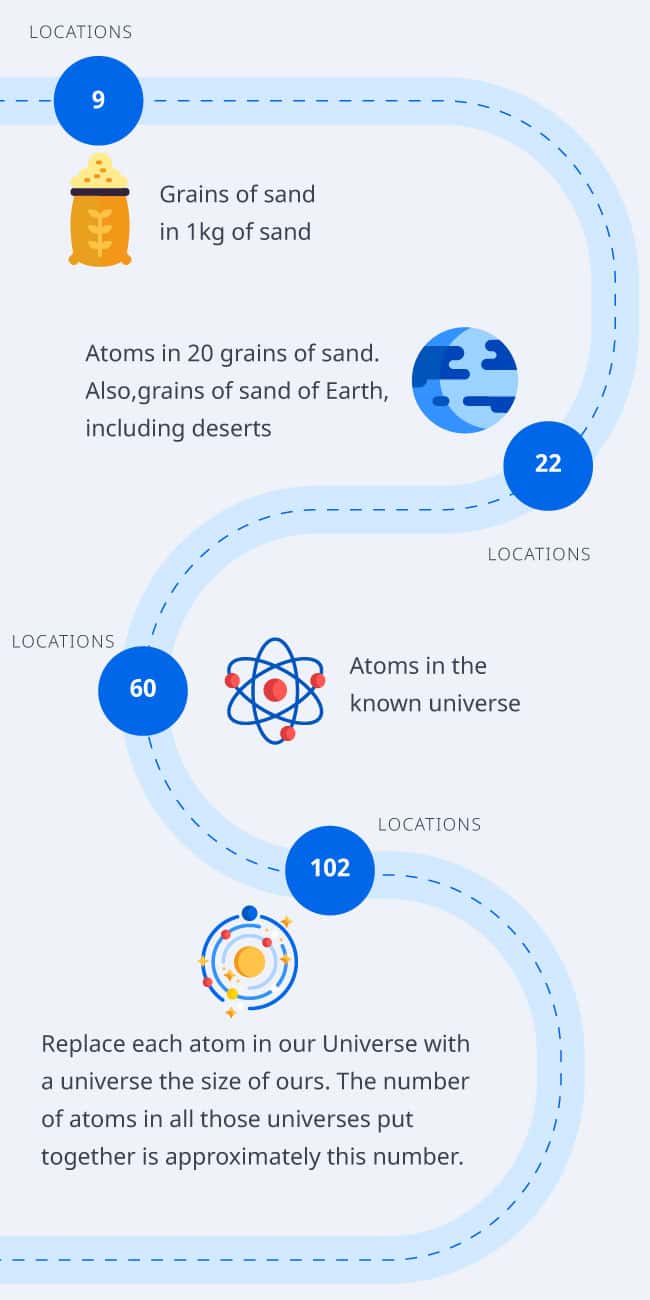Finding the shortest distance
In theory, it seems simple. The shortest distance will take the least amount of time and thus should be more efficient. Businesses often follow this logic and spend a lot of time and money in figuring out the shortest path from Point A to Point B.
Hypothetically, the shortest path should save them time, cut costs and increase overall efficiency.
So what's the problem then?
It's not quite that simple to find the shortest distance between points, especially when there are a number of points. The number of possible ways to travel between different locations grows exponentially, as the number of places to be visited are increased. The infographic below shows the magnitude of the problem.
No. of locations to visit


No. of ways to visit all locations
With just 9 locations to visit, the number of possible ways to travelling equals to the grains in 1kg of sand. When you increase the number of locations to 22, the number of possible routes increase to the number of grains of sand on the entire earth. Take the number of stops to 102 and the possibilities of the ways to travel become incomprehensive.
The Real-life Constraints
In a real-life scenario, there are a lot of on-ground constraints that add to the complexity of the issue. The easiest way to understand the problem is to take a look at the infamous Travelling Salesman Problem (TSP).
The problem statement has remained the same over the years: "Given a list of cities and the distances between each pair of cities, what is the shortest possible route that visits each city and returns to the origin city?"
When you scale up TSP to even within city limits, it would be an issue big enough to become news. Add to this, the traffic conditions in various cities at different times, the deliveries that are returned and different cost of vehicles, and you have got yourself a problem that can blow the RAM of your computer.

So, How Can Route Optimization Help?
Route Optimization is the process of finding the most cost-effective route, given a set of specific business parameters. It is more complex than simply finding the shortest distance between point A and B.
RO software can quickly test various 'what-if' scenarios and work with business constraints like- vehicle availability, traffic congestion, suitable rider, etc. to provide the best possible route.

Share this infographic by using this embed code:


